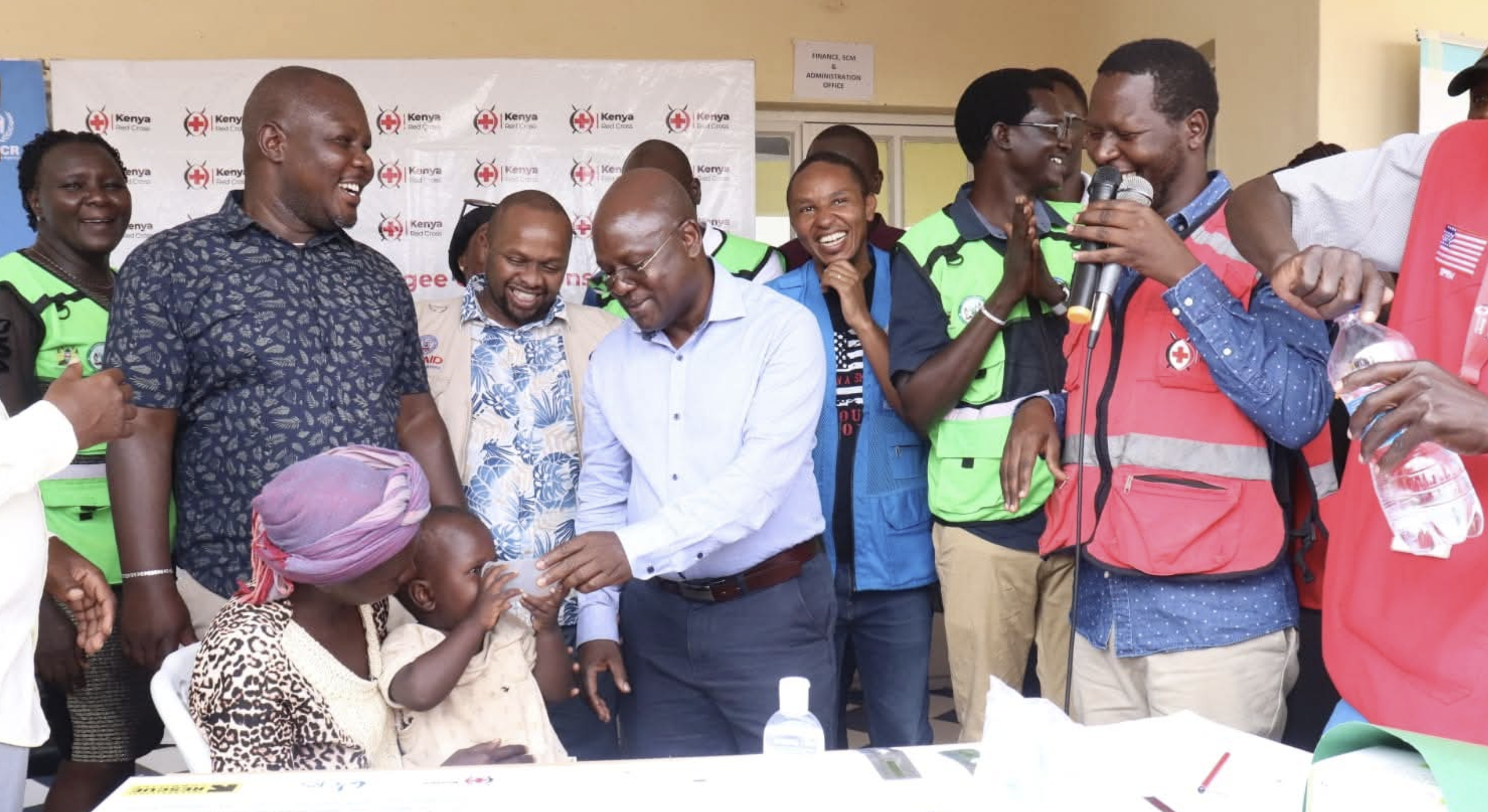 Turkana Deputy Governor Dr John Erus attends to a child when the county unveiled the Seasonal Malaria Chemoprevention (SMC) campaign. Photo/ Peter Gitonga, KNA.
Turkana Deputy Governor Dr John Erus attends to a child when the county unveiled the Seasonal Malaria Chemoprevention (SMC) campaign. Photo/ Peter Gitonga, KNA.
“Let’s get it clear, Seasonal Malaria Chemoprevention initial application in Turkana Central recorded up to 71 per cent efficacy. With that, we hope that the heavy burden of 7000 cases per week reported in facilities within the two camps and through these preventive interventions, malaria cases have decreased significantly, as was the case in Turkana Central,” said Dr Erus.
While calling on parents and guardians to allow the children to take up the medication to be administered in phases during the period of high malaria infection, the DG emphasised that the drug being administered was safe, just like all the medications that have benefited from scientific scrutiny.
Erus clarified that the SMC was being implemented alongside distribution of treated mosquito nets, Intermittent Preventive Malaria Treatment in Pregnancy (IPTp), continued vector surveillance, roll out of spatial repellent and strengthened case management.
He added that Turkana was ready to share the data of the success from the programme, since it was the leading county in SMC implementation in Kenya.
County Chief Officer for Medical Services Dr Gilchrist Lokoel cited data indicating that Turkana was among the top ten high-burden counties in terms of malaria prevalence, further urging the community to take part in the process.
Turkana is one of the malaria high-burden counties in Kenya, with a 39 percent prevalence against the six per cent, which is the national average prevalence. Current data indicates that incidences stand at 483 per 1000 population, with more than 50 per cent coming from Turkana West.
As a prevention strategy that works by administration of a combination of drugs, such as prophylaxis, the campaign will be running four cycles spread over three months, when vulnerability to malaria infection is highest due to the short rainy season from August to December.











